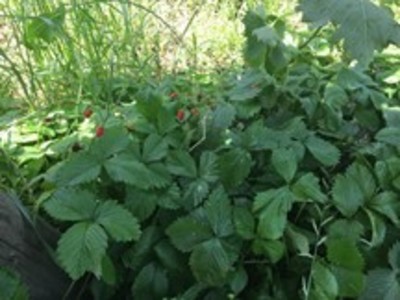{Tool} The use of strawberries as living mulch in organic orchards and vineyards (DOMINO Practice Abstract). Creator(s): Polverigiani, Serena; Zucchini, Matteo; Murri, Giorgio; Neri, Davide and Marchionni, Fabio. Issuing Organisation(s): UNIVPM - Università Politecnica delle Marche. DOMINO Practice Abstract. (2019)
|
PDF
- English
(The use of strawberries as living mulch in organic orchards and vineyards (DOMINO Practice abstract))
390kB | |
![[thumbnail of DOMINO_1.jpg]](/39679/2.hassmallThumbnailVersion/DOMINO_1.jpg)  Preview |
Image (JPEG)
- Cover Image
- English
17kB |
Summary in the original language of the document
Living mulch reduces the need for further soil management, starting from the second year after planting vines or trees. It assures a full soil cover during winter, thus reducing soil erosion and weed competition. It maintains a diversified plant community and provides potentially a secondary income.
• Select species with a limited summer growth(a sort of stasisor summer dormancy)to avoid or reduce water competition during the dry season.
• In mild winter climates (like Central Italy),transplant strawberry in autumn (generally the rainy season) to avoid drought stress to young strawberry plants.
• Transplant strawberry plants after soil tillage under the rowsof trees or vines, to stimulate competition of living mulch against weeds at the initial stage.
• Transplant the strawberries close to the main trunk. One plantlet per side should be enough to reach a quick soil coverin cool environments(double the density in case of clay soil or risk of waterstress).
• In the case of low tree/vine density, the strawberry must be planted along the row even far from the trunk (1 plant per meter), thus it is necessary to use an iron stick to protect the isolated plants against damages during soil tillage(picture 2).
• Remember that shallow tillage with a horizontal blade stimulates the growth of strawberry but strongly damages the tap root of several weeds
| EPrint Type: | Practice tool |
|---|---|
| What problem does the tool address?: | Weed management under the trees is crucial in organic fruit and vine production. Insufficient weed control might lead to competition and reduce yield, while mechanical tillage exposes the soil to excessive mineralisation of organic matter, erosion, leaching and loss of biodiversity. |
| What solution does the tool offer?: | Living mulch is a sustainable solution for weed management. The selected species (e.g. strawberries) create a stable and moderately competitive plant community (coenosis). Living mulch is particularly suitable in situations where soil tillage is otherwise unavoidable. |
| Country: | Italy |
| Type of Practice Tool: | Practice abstracts |
| Keywords: | weed control, cover plants, income, organic agriculture, orchards, fruit crops, vineyards, viticulture |
| Agrovoc keywords: | Language Value URI English weed control http://aims.fao.org/aos/agrovoc/c_8345 English cover plants http://aims.fao.org/aos/agrovoc/c_1936 English income http://aims.fao.org/aos/agrovoc/c_3820 English organic agriculture http://aims.fao.org/aos/agrovoc/c_15911 English orchards http://aims.fao.org/aos/agrovoc/c_5379 English fruit crops http://aims.fao.org/aos/agrovoc/c_3120 English vineyards http://aims.fao.org/aos/agrovoc/c_15203 English viticulture http://aims.fao.org/aos/agrovoc/c_8277 |
| Subjects: | Crop husbandry > Crop combinations and interactions Soil Crop husbandry > Production systems > Fruit and berries Crop husbandry > Weed management |
| Research affiliation: | European Union > CORE Organic > CORE Organic Cofund > Domino Italy > Univ. Politecnica delle Marche (prev. Univ. Ancona) European Union > Organic Farm Knowledge |
| Related Links: | https://www.univpm.it, https://organic-farmknowledge.org/tool/39679, https://www.facebook.com/organicfarmknowledge/posts/240527364526572, https://twitter.com/farm_knowledge/status/1385475081661452290 |
| Project ID: | ofk |
| Deposited By: | Gernert, Maria |
| ID Code: | 39679 |
| Deposited On: | 08 Apr 2021 08:41 |
| Last Modified: | 02 May 2024 10:32 |
| Document Language: | English |
| Status: | Published |
Repository Staff Only: item control page

 Download Statistics
Download Statistics Download Statistics
Download Statistics
